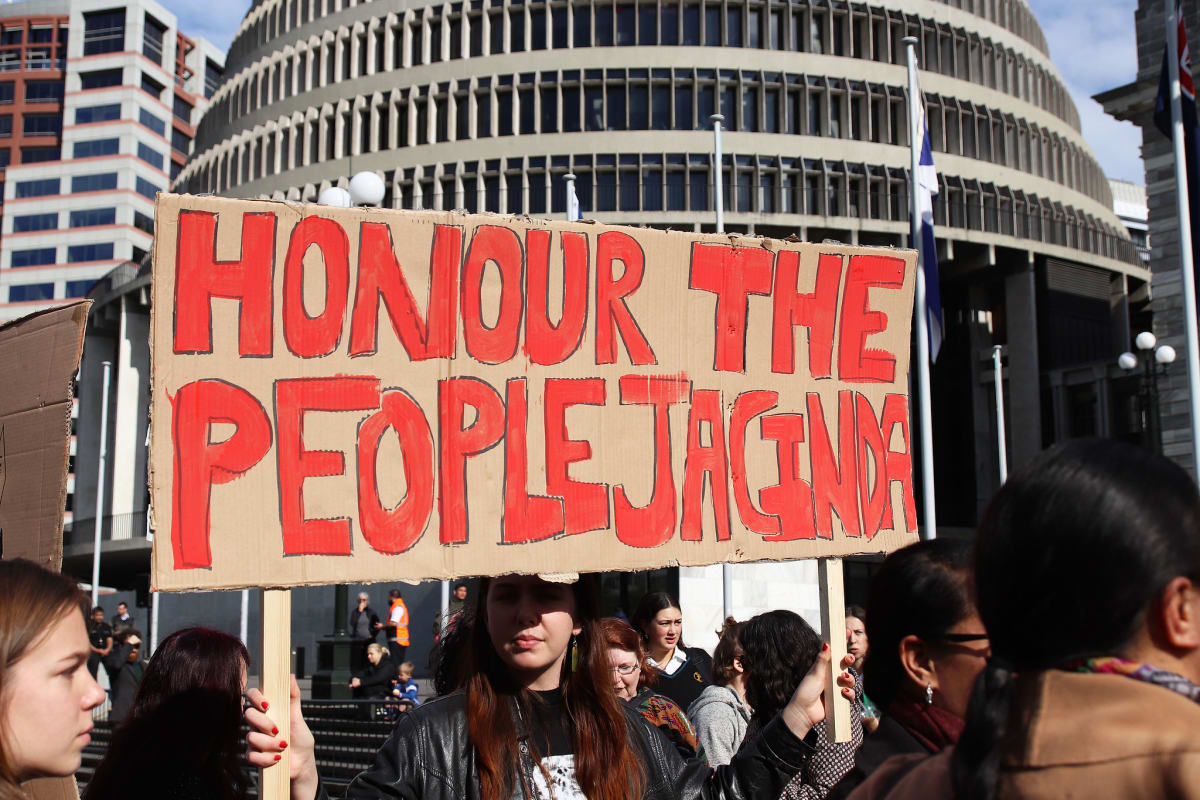A newly-released Cabinet minute shows ministers decided on December 14 the Crown would purchase the disputed land in Tāmaki Makaurau for no more than $30 million.
Three days later on December 17 the Finance Minister Grant Robertson announced the Crown would buy the land from Fletcher Building, which had previously put a price tag of $45 million on the property.
By then, SOUL (Save Our Unique Landscape) protesters at Ihumātao had been peacefully occupying the privately-owned land next to the Ōtuataua Stonefield’s historic reserve for the best part of four years.
Are some Government ministers conflicted in deciding the future of Ihumātao? Click here to comment.
Political leaders had spent most of that time arguing how to resolve the dispute, which came to a head in 2019 when Prime Minister Jacinda Ardern announced a halt in building at the site until a resolution was found.
New Zealand First, the coalition partner of Labour at the time, was against spending taxpayers’ money on the land. In the lead-up to the 2020 election, Winston Peters revealed he’d warned Ardern about the impact any deal would have on the stability of the government.
Peters wasn’t alone in his opposition to the Crown purchasing it: National toed the same line during that time and stressed it would risk reopening what were “full and final’’ Treaty settlements.

In the 1860s, Ihumātao was confiscated land, which was granted to the Wallace family, who farmed it for 150 years.
It was then sold to Fletcher Building in 2016 for a proposed housing subdivision of 480 homes.
The first Māori King was crowned at Ihumātao and the Kīngitanga movement, seated within Waikato-Tainui, joined protesters at the site in 2019 – hoisting a flag and then taking a lead role in government negotiations.
On March 9 last year, Cabinet, under Ardern and Peters, agreed to investigate purchasing the site, and developing a Memorandum of Understanding between the Crown, Auckland Council, mana whenua and Kīngitanga on how to use the land in the future.
No price or further conditions were put on purchasing the land until after the election in October last year, at which point Labour was in a position to govern alone.
That resulted in the December decision to buy the land for a maximum of $30m.
A group of ministers including Ardern, Deputy Prime Minister Grant Robertson and ministers for Housing, Māori Development and Crown/Māori Relations were tasked with finalising the deal.
The deed of settlement released last week shows the Crown ultimately purchased the land for $29,900,000 – a price Fletcher Building said would allow it to “break even’’.
A Cabinet paper presented in December shows the decision was designed to mitigate “the risk that the land will be subject to a Treaty claim in future’’.
That’s because Waikato-Tainui settled with the Crown in 1995 when the land was privately-owned.
The settlement prevented it from seeking redress from private property owners, like the Wallace family and Fletcher Building, but there were concerns this dispute could reopen that.
The deal struck late last year allows the Crown to purchase the land under the Housing Act 1955 which states, “the Minister for Housing may from time to time determine either generally or in any particular case what land or classes of land may be acquired for state housing purposes’’.
What happens with the 33.4 hectares of land is now down to a governance group, Roopu Whakahaere.
It will consist of seven members made up of three Ahi Kā representatives chosen by the Kīnigitanga, a separate representative from Kīngitanga, two people selected by the Crown and one observer from Auckland Council.
The purpose of the group is to clarify the use of the land in regards to housing, which could include a mix of papakainga housing, options for mana whenua and some public/community housing.
In the December Cabinet paper the Crown says it recognises “the need for housing on the site’’ but the extent of that will be decided by all parties in line with the MOU.
Any progress from this point on is down to Kīngitanga – and whose voice it chooses to be represented in the governance group.
A number of iwi have connections to the land and even within iwi and hapū there are splits and divisions as to what the land should be used for.
SOUL representatives, who have spent years living on the land in protest, will seek one of the three seats, leaving potentially only another two for what is a large number of differing views.
Government ministers have no role in deciding who those representatives should be – although Cabinet Minister Peeni Henare is one of the 12 advisors that make up Tekaumarua, which counsels King Tūheitia.
A number of other senior Labour members, including Foreign Affairs Minister and Waikato-Tainui MP Nanaia Mahuta, are closely connected to the movement.
In Mahuta’s case, she is a direct descendant of the late Queen, and cousin to Tūheitia.
So while the Government will want to leave it to Kīngitanga to resolve the almost impossible task of choosing, some ministers may find themselves in a sensitive and conflicted position.
At the time the Government announced the deal, it allowed for a five-year process to get shovels in the ground.
Reaching agreement on who should decide, and how much and what type of housing there should be could take more than that alone.



